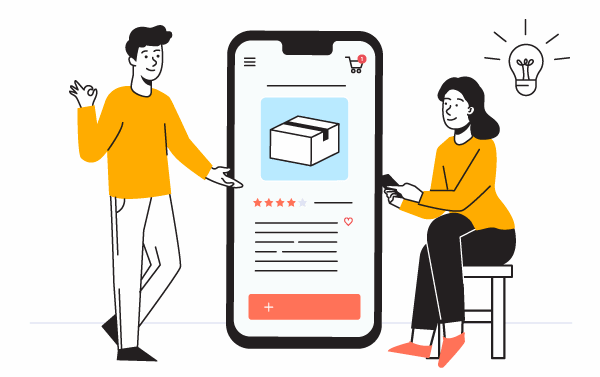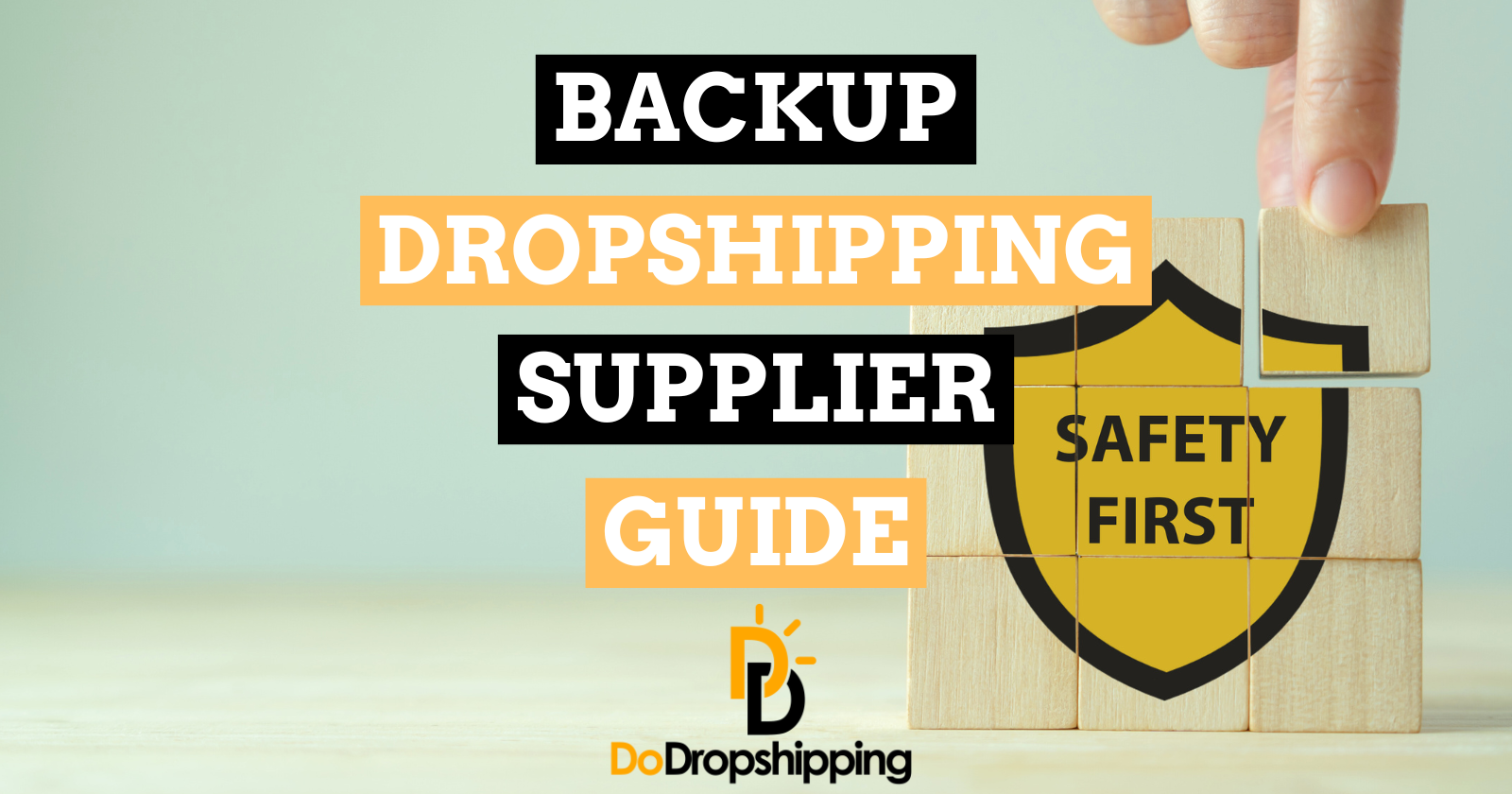You've worked for months, spending thousands testing numerous products.
And finally, you find a winning product.
Your phone is buzzing with orders, and the excitement is immeasurable.
But then, your nightmare begins.
Complaints from customers start pouring in; their orders haven't arrived despite them having paid.
Just when you think your life's a nightmare, it gets worse. Your dropshipping supplier ghosts you.
As scary as it sounds, dropshippers (even seasoned ones) who fail to prepare adequately must endure this reality.
But you can easily avoid it by having a backup dropshipping supplier.
In this guide, we'll learn what a backup dropshipping supplier is, why you need one, how and where to find the right one, how to test them, and when to switch.
Ready? Let's dive in.
Start your store on Shopify
Free 3-day trial + $1/month for 3 months
- Grows with you from first test product to full brand
- 8,000+ apps & themes to customize your store
- Beginner-friendly editor with pro features when you’re ready
No card to start. Cancel anytime.

What is a backup dropshipping supplier?

A backup dropshipping supplier is a pre-vetted alternative supplier of your dropship products.
They step in when your primary supplier can't fulfill your orders.
Reasons for having a backup dropshipping supplier
Finding a primary supplier, let alone a secondary supplier, is difficult.
It involves a vetting process to ensure they'll hold up during the busy times.
However, while difficult, there are plenty of reasons to go through the trouble of finding a backup dropshipping supplier.
For instance:
- Your main supplier might run out of stock. Suppliers can run out of stock for many reasons: cash-flow issues, product discontinuation, mismanagement, logistics delays (if they import from a different region), or seasonal spikes. Either way, this is a common problem that you must anticipate.
- Shipping delays. Natural disasters, warehouse errors, and port congestion are common, unpredictable causes of shipping delays. By maintaining suppliers in different geographical regions, you can prevent them from interfering with your supply chain.
- Main supplier's quality takes a nose dive. Suppliers can switch up the product quality on you without notice. This could happen because they want to cut costs or don't have control over the manufacturing process.
- Supplier gets suspended from marketplaces. Most suppliers rely on online marketplaces and supplier directories to be discovered by dropshippers. These marketplaces can paralyze your operations by suspending suppliers impromptu for non-compliance.
- Customer complaints from fulfillment issues. No one is immune to supply chain disruptions in international trade. But customers don't know about this, and frankly, they don't care. A backup dropshipping supplier helps you keep them happy when things go south.
As you progress in your dropshipping journey, you'll find more unique reasons for having a secondary supplier. However, you simply can't ignore the ones above.
How do you choose the right backup supplier?

We know who backup dropshipping suppliers are, but how do you pick the right ones from a sea of seemingly promising suppliers?
- They offer similar or better product quality. Product quality isn't negotiable: it either improves or stays the same. The last thing you need during a crisis is a series of product quality complaints.
- They have comparable or better shipping times. Hopefully, you're catching on. Your backup supplier must offer standards similar to or better than those of your primary supplier. Shipping times are no exception; customers can get super impatient, and we can't have them leaving disparaging reviews about your brand.
- They offer low minimum order quantities (MOQ). It's possible to find a supplier who checks all the right boxes but has an unsustainable MOQ. But there isn't a one-size-fits-all MOQ; it all depends on your business strategy and sales volume.
- They can easily integrate with your ecommerce platform. Inventory management gets easier when suppliers' systems easily integrate with your ecommerce platform. Integration lets you import products and capture remaining stock more accurately, which prevents overselling.
- They are great communicators and offer prompt support. A great backup dropshipping supplier should offer support in your language. This is crucial when dealing with returns and refunds, fulfillment updates, and other order issues.
- They are physically close to your primary market. The obvious benefit is faster shipping times, but there's more. Processing returns and exchanges is easier, shipping is cheaper, you avoid customs hassle, and your products and brand get a higher perceived quality.
Where to find reliable dropshipping suppliers

As a new dropshipper, you probably encountered dozens of YouTube videos oversimplifying the process of finding a supplier.
"Just scroll to the products with the most units sold, high reviews, and low MOQs on Alibaba," they said.
The truth? It's more complex than that.
This doesn't mean there isn't some truth to their words, but it's also possible to find an excellent supplier with low reviews.
You just need to be intentional with where you look.
Here are a few places to get you started.
- Online marketplaces (AliExpress alternatives). Marketplaces like CJDropshipping, Spocket, and Zendrop offer comprehensive sourcing solutions for dropshippers. Although similar to AliExpress, they're arguably more efficient for scaling and private-labeling.
- Private agents. You can find these individuals or businesses with the methods from this article.
- Domestic suppliers. Local US/EU suppliers. These are large, established, and known suppliers closer to your customers that provide faster turnaround times. Their downside is that they're usually costlier than their Chinese competitors.
- Wholesale directories. Wholesale directories are extensive databases of suppliers selling products at wholesale prices or significantly lower prices. Suppliers in these databases are mostly dropshipper-friendly. Examples of wholesale directories include SaleHoo, Inventory Source, Spocket, and Syncee.
Although not exhaustive, this list should give you an idea of where to look and what platforms to use to find potential supplier partnerships.
Testing a backup dropshipping supplier

After finding a potential backup dropshipping supplier, don't trust them blindly.
Here's what you'll need to do:
- Run tests parallel to your primary dropshipper. Don't start routing all your orders through the candidate immediately. Send them a few orders first to test the qualities on this list.
- Examine the product quality. Product quality is vital. Before sending products to your clients, anonymously order a few. Doing this lets you check whether their quality matches your standards.
- Check the shipping speed. How long does it take to ship? Do they consistently ship products on time in different regions and within the promised timeline? Have them fulfill a few orders to different customers in different regions to confirm.
- Communication and support. Communication is key. A great supplier responds to your queries promptly and professionally. For ease of communication, ensure your supplier can fluently speak your language, or you can speak theirs.
- Test interoperability. Interoperability means your supplier's systems can easily integrate with yours to enhance your workflow. If it does, managing inventory and importing products becomes easier.
- Hidden fees. Test orders reveal whether suppliers have any hidden costs. For instance, they might charge a handling fee, branding (or packaging) fees, or pass on currency exchange costs or payment gateway fees to you. Testing helps you discover these charges earlier.
- Inquire about their refund, return, and dispute policy. Returns are inevitable, so it's crucial to have a solid understanding of the supplier's return policy. Additionally, you need to know how they handle disputes way before you run into one.
Browse our free-to-use dropshipping suppliers directory. Filter vetted suppliers by niche, country, and pricing to find the best partners for your online store.
- Discover local, niche, print on demand, and general suppliers in one place.
- Compare free, budget-friendly, and premium plans you can actually sell with.
- Skip endless scrolling through guides and jump straight to suppliers that fit your store.
Updated for 2025 and still growing with new vetted suppliers.
When do you switch to a backup dropshipping supplier?

You've laid the foundation and done the hard work, and now you're wondering when you'll need to switch to the backup dropshipping supplier.
Besides being an instinctual thing (you'd just know when to switch), a few things would prompt you:
- Primary supplier starts slacking. You start noticing bad reviews on their account. Maybe because their product quality has declined, or they keep running out of stock. When you start noticing these red flags, it's time to start transitioning.
- Sales surge on your website. A switch isn't always the primary supplier's fault. Sometimes, your business takes off, and you need all the help you can get to avoid fulfillment bottlenecks. If your sales surge, relying on one supplier could choke your operations if, for any reason, they stop fulfilling.
- Primary supplier ghosts you. Why would a supplier ghost you? The truth is, it doesn't matter. Just prepare for it. Suppliers are people, and anything can happen when you're dealing with people. Better to stay ready than get caught with your pants down.
Turn this guide into an AI checklist
Click your favorite AI tool below to get a short summary and step-by-step checklist based on this article.Prefer ChatGPT? Open this guide in ChatGPT with a pre-filled prompt (most readers start here).
Taking action
Reading and absorbing information and knowledge is great (definitely if it's free), but do you know what's even better?
Taking action!
So, to help you with taking action with what you have learned in this article, take a look at the bullet points:
- If you already have a primary supplier with whom you've maintained a good relationship, you know what you like about them. Write down these qualities, plus other things you consider important for your business.
- You can tell the "other things" by visualizing your goals. These "other things" are important artifacts that help you achieve your goals. For instance, if your goal is to scale to a different region, ask yourself which qualities a supplier should have that can help you achieve that.
- After noting the important stuff, collect a list of potential suppliers from the locations we listed above (online marketplaces, directories, etc.).
- One by one, talk to these suppliers one by one, checking how they measure up against your requirements. Repeat this process until you're satisfied with your final backup dropshipping supplier candidate list.
- If your goal is one supplier, strive for two or three finalists. Run them through the testing process to determine the best one.
- When the time is right, make the switch.
Conclusion
Getting a winning product is an uphill task, especially when starting out with dropshipping.
But imagine the disappointment when you finally find yourself a winner and it slips through your fingers because you didn't prepare for success.
Don't be that person! You have a cheat sheet, now use it.
This guide has given you a solid foundation for finding a backup dropshipping supplier.
All the best!
Want to learn more about dropshipping?
Ready to move your dropshipping store to the next level? Check out the articles below:
- The 9 Best Free US Dropshipping Suppliers in 2025
- The 9 Best Free UK Dropshipping Suppliers in 2025
- Top 11 Fastest Dropshipping Suppliers (Quick Delivery)
Plus, don't forget to check out our in-depth guide on how to start dropshipping here!












